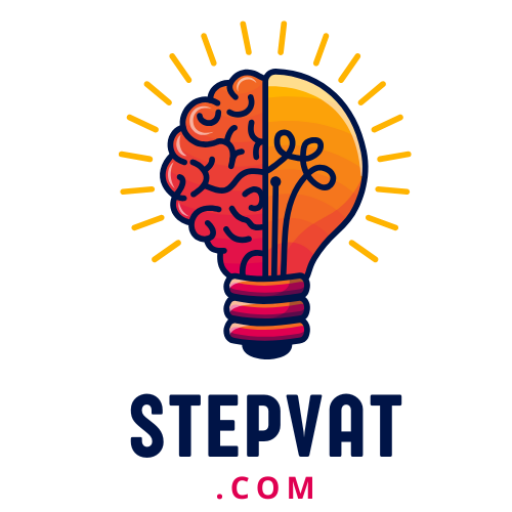Anuncios
ai financial education can turn confusing terms into plain talk—so you can learn with less stress and more confidence.
Curious: what if simple, friendly tools could explain compound interest like a fifth‑grade lesson and show how budgeting fits your life?
You’ll see how today’s tools explain personal finance basics, help you set a budget, and track spending at your pace. Popular platforms like ChatGPT, Copilot, Gemini, Cleo, and Wally offer conversational help, nudges, and transaction coaching. These examples make learning practical, not just theoretical.
This guide previews safe ways to use those tools and points out when human advice still matters. You’ll learn steps to protect data, keep boundaries, and test simulations that compare choices. Use these ideas to build real skills and stronger financial literacy—then consult a qualified pro for major decisions.
Why AI Matters Now for Your Financial Literacy
Right now, pressure on budgets and faster market moves make clear, practical help more valuable than ever.
Today’s landscape combines tight household funds, quick shifts in markets, and more online options for learning. Tools can break down terms like APR or compound interest using simple analogies and follow-up prompts. That makes learning less intimidating and more tailored to your income and goals.
What these tools can do is surface insights from your spending and income, suggest budgeting steps, and point out patterns in habits or recurring costs. They turn static lessons into interactive guides that meet you where you are.
- Lower cost and faster answers help when time and money are tight.
- Personalized explanations make concepts easier to remember and use.
- Pattern spotting supports smarter decisions about savings and spending.
Limits to keep in mind: these systems can miss context, show generic outputs, or lack complete data. Use them as a coach for learning, not a substitute for licensed advice on major investment or tax choices.
ai financial education: Foundations, Benefits, and Limits
Start with clear, everyday answers that turn confusing terms like APR and compound interest into usable steps.
Key concepts made simple: APR is the yearly cost of borrowing, including fees, so you can compare offers without getting lost in fine print.
Compound interest is often explained as a “snowball”—small balances grow faster over time. That shows why starting early matters for savings and why carrying balances raises long‑term costs on debt.
- You can build a basic budget by mapping income and expenses into clear categories that reflect your life and goals.
- Credit matters: payment history, utilization, and account age shape your score; small, steady steps improve it.
- Use short drills to learn terms, and set a weekly check to turn learning into action.
Where humans still fit: these tools are great for definitions and practice, but licensed pros give tailored advice on taxes, legal contracts, or complex investments. Treat tools as a learning partner, not a decision maker.
The AI Tools Landscape You Can Use Today
A practical tool map helps you match features to goals. Below is a neutral, how-to view of current tools and simple use cases. Start with safe data and try read-only modes before connecting accounts.
Conversational learning
Chat helpers like ChatGPT, Copilot, and Gemini offer step-by-step explanations. You can ask for plain-language walkthroughs, follow-up prompts, or short quizzes to practice terms and scenarios.
These applications are best when you want quick clarifications, scenario practice, or examples that relate to your goals.
Money assistants
Cleo analyzes spending and nudges you toward savings goals. Wally auto-categorizes transactions and WallyGPT adds in-app coaching to help change habits.
Use these when you want recurring prompts, habit tracking, and clearer visibility into where your money goes.
Robo-advisors and hybrids
Automated portfolios, like Magnifi, show how risk, fees, and diversification work through dashboards. Hybrid models pair automation with human advice for extra context.
- Compare clarity of insights, costs, and fit for your goals.
- Start with sample data or read-only access to protect privacy.
- Reassess tools as the market and platform updates evolve.
Hands-On Learning: Turn Your Budget, Savings, and Debt into Practice
Start small and keep it safe. Use real transactions and short weekly checks to learn how your money moves. This lets you test choices and build confidence without long hours.
Budgeting workflows: categorize expenses, spot patterns, set goals
Import recent transactions, confirm categories, and mark recurring bills. Do this once per week to catch surprises and align your plan with actual income.
Automating savings: high-yield accounts, CD ladders, and smart nudges
Set small, automatic transfers to a high-yield account. Try a CD ladder in a simulator to weigh term lengths and access needs before committing funds.
Debt strategies: simulations for repayment order, interest impact, and timelines
Run repayment simulations—avalanche versus snowball—to compare total interest and time to finish. Use neutral tools and keep a buffer for irregular pay.
Real-world example: how alerts and simulations change monthly choices
Step-by-step process:
- Import transactions and confirm categories.
- Set a savings goal and an automatic micro-transfer.
- Run a debt payoff simulation and pick a plan you can stick with.
“Small, consistent checks turn information into timely decisions.”
Repeat this 20-minute weekly process so progress compounds. Verify choices and get professional guidance for complex decisions.
Investing Education with AI: From Concepts to Caution
Start by translating market data into plain outcomes you can test with a demo account. Use simulations to see how different asset mixes affect volatility and long‑term potential.
Learn to read basics: check fee disclosures, expense ratios, and historical drawdowns so you can compare options in plain terms. Small differences in fees compound over time, so they matter.
Using market data and scenarios to understand risk, fees, and diversification
Run scenario tests that show best‑case and worst‑case market moves. That helps you map risk tolerance to timelines and keep emergency savings separate from investing.
Robo-advisors as a classroom: goals, rebalancing, and costs explained
Robo‑advisors like Magnifi can demonstrate diversification, automatic rebalancing, and fee tradeoffs at lower cost than traditional advice. Use their sandboxes to practice without risking money.
- Read simple market charts and fee tables to compare choices.
- Try demo accounts to see how rebalancing changes outcomes.
- Set clear financial goals and map timelines to risk levels.
- Document simple rules you can follow when markets move.
“Projections are not promises; verify data and consult a licensed advisor for personalized plans.”
For step‑by‑step investment simulations and neutral explanations, try this resource on investment advice. Practice decisions in a demo, note what you learn, and seek professional advice when choices get complex.
Access, Inclusion, and Compliance in the United States
Design that adapts to different needs helps people use tools to manage money with confidence.

Adaptive interfaces such as screen‑reader support, larger text, and conversational flows make the user experience easier for more individuals. These features help people with varied ability levels learn and practice money management without extra friction.
Expanding access: adaptive interfaces and inclusive design
Look for products that publish accessibility standards and offer plain‑English help. Clear labels, keyboard navigation, and voice prompts all improve usability.
ConnectingYouNow and similar solutions show how generative features can tailor content to reading levels and device needs. That makes learning and payments simpler for many users.
Alternative data and credit: Equifax OneScore and responsible use
Some scoring systems, like Equifax OneScore, include alternative data such as utility and subscription TV payments to assess creditworthiness.
This can widen access to loans when used with transparency and consent. Still, verify what data is collected and how it’s used before you share it.
Biometric onboarding can speed sign‑ups, but it raises important privacy and consent questions. Read product policies, keep records of what data you share, and learn how to revoke access.
“Check accessibility statements, consent flows, and data controls before you connect accounts or accept new features.”
- Review a tool’s accessibility and privacy pages.
- Check what alternative data a scorer uses and why.
- Keep a log of shared data and how to revoke permissions.
- Ask support for plain‑language explanations if anything is unclear.
When in doubt, consult a qualified attorney for legal questions about privacy or compliance. Use these practices to promote responsible innovation while protecting your rights.
Privacy, Security, and Regulation: Learn Safely with AI
Think of privacy as a checklist you run before connecting any money app. Start by sharing the least information required and avoid pasting full account numbers or IDs into chat or forms.
Data privacy basics: permissions, storage, and minimization
Review app permissions and storage policies before you connect accounts. Turn off history where possible and export or delete old information when you stop using an application.
Security threats and defenses: phishing at scale vs. AI fraud detection
Threat actors now use tools that automate phishing and malicious code. At the same time, artificial intelligence helps flag anomalies and spot fraud patterns.
Good habits include a password manager, strong unique passwords, and multi‑factor authentication on money apps.
KYC and identity: biometrics and compliance considerations
Know why a service requests biometrics and decide what you’re comfortable sharing. Document your decisions and store consent records securely.
“Minimize data, verify permissions, and take time on sensitive decisions.”
- Share only the data needed.
- Check permissions and storage rules.
- Use MFA and a password manager.
- Consult legal counsel for specific compliance questions.
Conclusión
Close this guide by picking a short plan that you can test and improve each quarter.
Use trusted tools like ChatGPT/Copilot, Gemini, Cleo, Wally, Magnifi, or Equifax OneScore as coaches to practice budgeting, tracking, and simple investment simulations.
Keep privacy top of mind: verify data requests, use read-only modes, and document permissions before you connect accounts.
Focus on small habits—weekly check-ins, clear goals, and calm decisions—to steadily improve financial literacy and personal finance skills.
When choices get complex, seek advice from a financial advisor, accountant, or lawyer. Revisit and refine your plan quarterly so your money and goals stay aligned.



